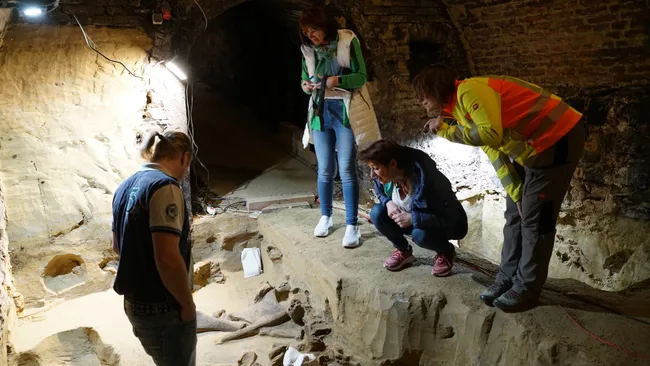Researchers have unearthed over 300 mammoth bones from at least three individuals in an Austrian wine cellar, hinting at possible human involvement in their butchering. The discovery was made by winemaker Andreas Pernerstorfer in the village of Gobelsburg, northwest of Vienna.
Pernerstorfer stumbled upon the bones in March while renovating his cellar. Initially mistaking a bone for a piece of wood, he recalled that his grandfather had previously found teeth in the area. “I thought it was just a piece of wood left by my grandfather,” Pernerstorfer told the Austrian Broadcasting Corporation (ORF), according to BBC News. “But then I dug it out a bit, and then I remembered that in the past, my grandfather said he had found teeth. And then I immediately thought it was a mammoth.”
The Austrian Archaeological Institute (OeAI), part of the Austrian Academy of Sciences, announced the excavation of around 300 bones from at least three mammoths. A similar find of bones and human artifacts was made in a neighboring cellar 150 years ago, suggesting both cellars might be on the same ancient site.
Hannah Parow-Souchon, an archaeologist at the OeAI, described the new find as an “archaeological sensation,” noting the rarity of such a dense bone layer of mammoths. “It’s the first time we’ve been able to investigate something like this in Austria using modern methods,” she stated. The bones are estimated to be between 30,000 and 40,000 years old. Alongside the bones, the team discovered stone artifacts and charcoal, indicating possible human activity.
There are still many questions surrounding the find, particularly how the mammoth remains ended up so close together. One theory is that humans hunted and killed the mammoths by driving them to the site and trapping them. “We know that humans hunted mammoths, but we still know very little about how they did it,” Parow-Souchon explained.
The ongoing investigation by the OeAI aims to uncover more about the interactions between humans and mammoths at this site, potentially shedding light on ancient hunting practices.
